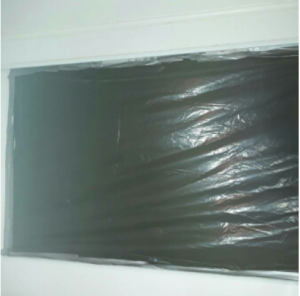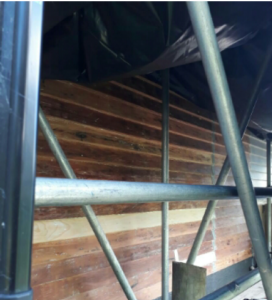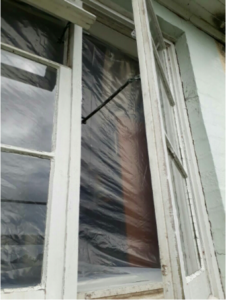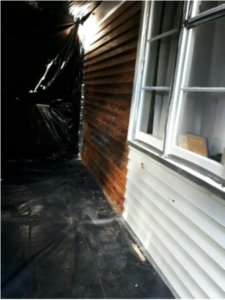Lead Paint Removal Services in Auckland
We all appreciate that paint removal is a messy job; however, when you are removing lead paint, you really need to be aware of the dangers involved as you try to minimise the mess! That’s why using a lead paint removal service is strongly recommended to ensure safety and compliance with health regulations.
These are the guidelines as outlined in the Ministry of Health Guidelines that must be followed:
- Assume paintwork on pre-1980 buildings to be lead-based, unless it is proven otherwise by records or
- Use only workers who understand the hazards associated with lead-based paint and follow the procedures defined in the 2017 Guide to Hazardous Paint Management
Health Effects of Lead
Lead is a toxic substance, capable of seriously harming the body’s central nervous system.
Lead is a toxic substance, capable of seriously harming the body’s central nervous system. Lead is known as a cumulative poison. This means that it builds up in the body, and it takes some time for the substance to be excreted. Absorbed lead is distributed to almost all regions of the body; therefore, it is a substance that is capable of causing different types of harm. The brain is the most sensitive to lead poisoning, while approximately 90% of absorbed lead is stored in bone tissue.
With our increased knowledge of the hazards of lead exposure comes increased responsibility for identifying hazardous lead processes and taking all practicable steps to eliminate, isolate, or minimize these hazards—both for you, our client, and for the team who work for us. As one of the trusted lead paint removal companies offering professional lead paint removal in Auckland, we ensure all safety protocols are strictly followed to protect health and wellbeing.
How is lead absorbed into the body?
- inhalation (for example, breathing in lead dust or fumes); or by
- ingestion (for example, eating products containing lead, or eating food, smoking cigarettes or biting fingernails after working with lead).
While it is important to control airborne lead dust and fumes, it is also important to make sure that people working with lead have good personal hygiene habits.
Even very small amounts of lead accidentally ingested with food or drink, smoking cigarettes or biting fingernails can increase a person’s lead uptake.
Lead Paint – Removal Risks
Wet scraping using paint strippers/solvents has proven to be one of the most popular, efficient, and accepted methods of lead paint removal in NZ (refer to ASNZS4361.1-2017 Guide to Hazardous Paint Management). For this reason, many property owners turn to a lead paint removal service to ensure the job is handled safely and in compliance with regulations.
However, for paint strippers/solvents to work so efficiently, softening the paint layer to allow removal requires chemicals. These chemicals pose a serious risk of harm to the user. When selecting the paint strippers/solvent, the label must be checked to ensure that it DOES NOT contain methylene chloride or dichloromethane. Methylene Chloride (Dichloromethane) is an extremely efficient paint remover; however, when using this chemical, even a cartridge-style or battery-powered device used to filter the air will not be enough. Only a full-face respirator with a separate air supply or exhaust ventilation to remove the fumes will provide protection.
Methylene Chloride (Dichloromethane) poses severe health risks and faces an international ban as a paint remover. Refer:
httpss://www.epa.gov/newsreleases/epa-announces-action-methylene-chloride
When choosing the paint scraping method the person carrying out this work needs to mindful not only of the chemicals used but also that the lead scrapings are contained to prevent cross contamination of other areas including the soil.
Lead Paint – How to Remove it Safely
Here at CSS we promote a dual system for lead paint removal involving:
- Mechanical paint shaving process
- Chemical stripping (using solvents without methylene chloride also known as dichloromethane)
Our paint shaving equipment cuts the paint from the surface while sucking up the stripped debris into a HEPA vacuum system.
A solvent cleaning process is used for the remaining paint boarder (cutting in), around windows, doors, soffit and any other structural elements which may restrict the machines movement.
Lead Paint Removal – CSS using the dual method to save you time and money
CSS believes that our dual system has key advantages:
• Cut down on labour costs
• Reduce the use of solvents
• Minimise lead dust exposure
• Reduce the risk posed by lead paint debris on ground cover
• Minimise workers’ cross-contamination through debris tracking on work boots
• Minimise post-job clean up, i.e. scaffolding
• Containment of lead paint particulates using extraction
Restore Safety with Trusted Decontamination Experts
At CSS, we understand the serious health risks posed by hazardous materials like lead-based paint. That’s why our lead paint removal service follows strict industry and safety guidelines to ensure your property is treated with the highest level of care and professionalism.
Whether you’re dealing with old lead coatings or broader contamination concerns, our team provides comprehensive decontamination services in NZ, designed to protect your health, your home, and the environment.
Contact us today to learn more about our specialised solutions and how we can help restore safety and peace of mind to your space.
Restore Safety with Trusted Decontamination Experts
Remember, if you have any concerns or queries about getting started, just give us a call 09 8281731 or submit an enquiry via our contact page.

Lead-based Paint Removal FAQs
What are the dangers of lead-based paint?
Lead-based paint is toxic and can seriously harm the central nervous system. It is a cumulative poison that builds up in the body over time, primarily affecting brain and bone tissue.
How is lead absorbed into the body during lead paint removal?
Lead can be absorbed through inhalation (breathing in lead dust or fumes) or ingestion (eating or drinking contaminated substances). It is crucial to control airborne lead dust and ensure good personal hygiene habits for those working with lead.
How does CSS ensure safe lead paint removal?
CSS utilises a dual system involving mechanical paint shaving and chemical stripping using solvents without methylene chloride. This approach minimises lead dust expoisre, reduces labour costs, and promotes safer removal practices.




